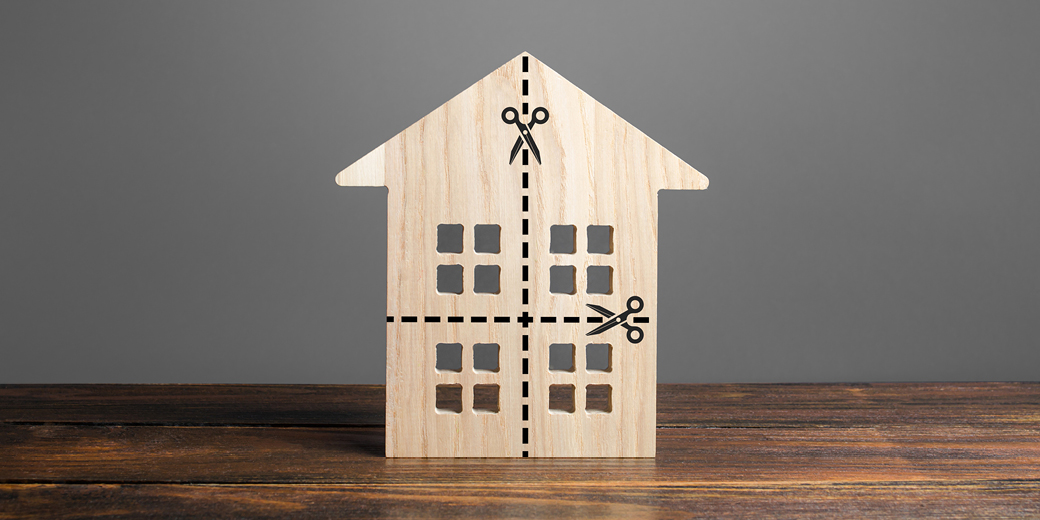The legal profession is dominated by smaller firms, it is a demographic made up of suburban, rural and regional practices servicing local communities, and boutique firms.
Law firms face lifecycle and generational-change issues in which sale, succession and partnership pathways are options.
Insights spoke to Peter Frankl, a specialist in law firm practice broking and valuations, about what lawyers should consider when selling their firms and what buyers should look for. Peter Frankl also edits news website Legal Practice Intelligence.
“For sellers, the key is to stay in control of the process,” said Peter. “Decide what type of buyer would benefit most from buying the firm. Prepare information about your firm with those types of buyers in mind. Release information in stages so that you can obtain some feedback at each stage and decide whether negotiations are worth continuing. Without a methodology in place before getting started, the process of selling a practice can be time consuming and emotionally draining.
“An experienced broker of legal practices can be a source of advice on valuation and can put in place a methodology that protects privacy and confidentiality.”
For buyers, Peter advises a focus on revenue rather than expenses.
“The value in a firm is mostly in its revenue,” he said. “This means understanding fee revenue by areas of law. Different areas of law will have different degrees of attractiveness to a buyer.”
Other data points to consider include the number of matters opened each year and the average value of those matters.
“Expenses and staffing are most relevant when there are impediments for the buyer to optimise them in the future – for example, a long uneconomic lease on premises.”
The ideal buy-out scenario usually involves the outgoing principal staying connected to the practice on a flexible reduced-time basis.
“In the eyes of clients, the change in ownership is seen as a positive expansion with the introduction of new people, skills and services. It can be risky to present the image of ‘under new management’ with the disappearance of the outgoing principal.”
Then there’s the matter of money.
“There are wildly different views on the price and value of legal practices. This can be explained by the fact that not all firms are of interest to all buyers. An obvious example is that a conveyancing firm will be of little or no interest to a family lawyer. Therefore, there has to be a ‘match’ in interests. When there is a good degree of compatibility between the firm and the prospective buyer, the value to the buyer becomes evident. Because the amount that is usually required to buy a law firm is relatively modest compared to the value of residential property in the big cities and also compared to other types of businesses, the most common scenario is a single lump sum payment.”
Peter encourages lawyers to consider buying a practice over setting up their own.
“Buying a practice is a booster strategy. It can save you years in getting to where you want to be. Consider how much time and money you would spend on advertising and business development for a new practice, just to reach the same level of revenue that you get with an existing practice. A dollar spent on buying a practice will generally have a much better return than a dollar spent on advertising.”
Further, it is at present a comparably inexpensive proposition with a manageable downside.
“At the moment, the funds needed to buy a legal practice are many times less than required to buy most other businesses. Should you later want a change in direction, or if the practice doesn’t generate enough income, it is unlikely to be a financial catastrophe. Even if you close the doors and walk away, if you have managed your exposure to the few fixed costs of running a firm, you will survive a change of direction.”
In addition, running your own practice brings the benefits of autonomous decision-making and freedom from dependency on a salary.
“If you have an unexpected parting of the ways with your employer, it is a certainty that your income will go from whatever it is now to zero. If you lose a client, then your income may dip by a small single digit percentage and that is if the lost client isn’t replaced by a new one.”
How to buy and sell a law firm
- Published:
- 18 Apr 2018

RELATED CONTENT

News
The Rakes You Love to Hate: Top 10 Wicked Lawyers
Don’t we all just love to watch those onscreen lawyers who thrive on flexible ethics, infuriating tactics, and an unorthodox knowledge of the law? They may even remind us of an adversary or two – wink-wink. The College of Law rounds up the top 10 lawyers you love to hate.

News
Bridging the Gap: Family Law Resources for Aboriginal and Torres Strait Islanders
Family law matters are deeply personal and may be emotionally charged. For Aboriginal and Torres Strait Islander families, these challenges can be compounded by cultural considerations and historical disadvantage.

News
Who’s Who – Five of Australia’s Top Lawyers
Anyone who has needed to wade through law school essays, summer clerkships, and legal document reviews will know that the world of law can be more tedious than David E Kelly would have us believe. However, like any other competitive pursuit, the Australian legal scene has seen its fair share of historic moments and game changing events.

News
The cost of law: How litigation funding works with lawyers in Australia
Insights spoke to Wayne Attrill, a Senior Investment manager with IMF Bentham, a global litigation funding firm, on how litigation funding works alongside lawyers to help meritorious claims, its somewhat controversial history, and its increasing role in resolving disputes.

News
Five Steps to Better Lawyer-Client Relationships
Building strong, mutually respectful relationships with your clients helps you fulfil your professional duties – and makes your professional life much easier. Professional rules require practitioners to act honestly and fairly in a client’s best interests and to act with due skill and diligence in service of the client.

News
A day in the life of a Wills & Estates lawyer: Coffee first, cat trusts later
What is it really like to be a Wills and Estates lawyer? We spoke to Phillip Briffa, an award-winning Wills and estates lawyer, about what his daily workload looks like. Along with some of the more memorable requests that he receives daily.

News
The Property Law Act 2023 is coming into effect on 1 August 2025
A wrath of changes will be imposed upon Queensland legal practitioners, real estate agents, landlords, and mortgagees when the Property Law Act 2023 comes into effect on 1 August 2025. According to Tara Cush, College of Law lecturer Queensland, there will be the need to use specific forms to meet obligations under the new Act.

News
From 🤔 to 👍: How Emoji Are Finding Their Way Into Australian Law
Learn how emoji are making their way into Australian law. John Molloy, Lecturer at the College of Law, recently won the Australian Institute of Administrative Law blog competition with his examination of emoji use in administrative law. His analysis explores how these small digital pictographs might reshape legal communication in an increasingly digital world.

News
The Fraud Among Us: Why the Best Lawyers Feel Like the Biggest Fakes
Imposter Syndrome haunts the competent, yet rarely troubles those who could probably do with a healthy dose of self-doubt. It’s a state of being all too familiar for many lawyers, and one of the most common that performance coach and former CEO of Squire Patton Boggs, John Poulsen, sees in his work. In this interview, we explore the roots of imposter syndrome and how legal professionals and legal organisations can overcome imposter syndrome with awareness, values alignment, and purpose.

News
Perfectionism in the legal profession: Secret weapon or secret shackle?
Often touted as a lawyer’s secret weapon for success, perfectionism can boost productivity and improve your case results. But there is a shadow to this trait. We spoke with Shona Rowan on how to spot, harness and tackle perfectionism – for a constructive and sustained legal career.

News
How to grow your law firm through referral partnerships
No law firm succeeds without referrals, but new firms often struggle due to a limited client base. To overcome this, many firms partner with related businesses or more established firms. We've compiled four tips to help you to grow your firm through referral partnerships, to establish your reputation and a steady client flow.

News
Insider Tips from a New Sole Practitioner
Ian Aldridge, Principal, Progressive Legal, recently opened a sole practice. As a follow on from our previous article Single and Ready to Mingle – Tips for Becoming a Sole Practitioner we asked Ian to reflect on his recent personal experience to provide tips for lawyers who have also decided to open a small practice.

News
Decisiveness: Why it’s the skill every lawyer needs
What skills matter most to lawyers? As lawyers’ careers progress, technical expertise develops alongside an ability to ‘read’ what a client wants, needs or might not be saying, as well as other skills like negotiation and business development. Yet the ability to make good decisions is often overlooked as a key skill of good lawyers.

News
Meet Jess Grumelart, who studied an LLM to help her upskill and find connections in family law
Learn how Jess Grumelart forged a career in family law through a chance encounter at a careers fair - and an LLM in Applied Law (Family Law). We spoke to Jess about her road to family law, how her LLM helped her connect to a community of supportive family lawyers, and what advice she might have for lawyers wondering to align their legal career with their interests and passions.

News
How to Become an In-House Lawyer
It’s a common question: how do you become an in-house lawyer? Is there a good time to make the move? How do you prepare, via secondments or other relevant experience? What qualities make a great in-house lawyer?
In-house is a very different environment to a law firm, especially as most in-house teams are still relatively small – often between three to six lawyers.

News
How lawyer-turned-executive-coach Ellie Scarf brings out the best in leaders and teams
Ellie Scarf's clients include major multinational law firms and global organisations. Insights spoke to Ellie about what her role involves, and what advice she might have for lawyers and leaders keen to hit peak performance.

News
"The LLM set me up beautifully for accreditation” – Adeline Schiralli, Keypoint Law
Adeline Schiralli, Consulting Principal at Keypoint Law (NSW), is a master of Wills and Estates law. Literally. Adeline traces her journey to specialisation, highlighting the College of Law’s LLM as a crucial step to accreditation.

News
An interview with the Attorney-General, Honourable Mark Dreyfus KC MP
If you had the opportunity to sit face-to-face with the Attorney-General for Australia, the Honourable Mark Dreyfus KC MP, what would you ask? What would you want to know? Students and staff at the College of Law’s new international headquarters in Sydney were lucky enough to gain this exciting opportunity.

News
Introducing the 7 National Principles to Address Coercive Control
Family lawyers must be aware of how violence can affect their clients, their client’s case and so be able to identify domestic violence. On 22 September 2023 the National Principles to Address Coercive Control in Family and Domestic Violence were released by the Attorney-General’s Department (‘A-G’).

News
How human rights lawyer Nawid Cina saved over 100 lives
Nawid Cina managed to evacuate more than 100 vulnerable women and children from Australian-run orphanages in Afghanistan when the Taliban took control in 2021. The orphanages were run by Mahboba Rawi’s Australian charity Mahboba’s Promise, the Australian connection put the women and children living at the orphanages at significant risk from the Taliban. A graduate of the College of Law, we spoke to Nawid to learn more about his human rights work and to gain his legal and career insights.

News
John Poulsen’s 12 stress-busting tactics for high-performing lawyers
Managing stress and improving your mental health can help you live a better life - in all areas of your life. John Poulsen, former CEO of Squire Patton Boggs, shares some of his research into the role stress plays in our lives, both necessary and unnecessary, and shares his top 12 stress-busting tactics he has observed successful people adopt.

News
You know the law, but do you know your client?
Obtaining clear instructions from your client may seem like a straightforward requirement as a lawyer. However, this can be easier said than done if a client is in a fraught emotional state (and if they are seeing a lawyer this may be the case) or if there are differences in culture. Special Counsel Olamide Kowalik knows this all too well, as part of the Springwood-based Revolution Law team, Olamide advises clients from a wide range of backgrounds. We asked for Olamide’s advice on navigating these issues in order to gain clear instructions.

News
Space Law: the final legal frontier with Helen Tung
Space law is a growing field as humanity embraces space exploration with renewed vigour, propelled by private interests and national endeavours. We caught up with Helen Tung, College of Law lecturer in international arbitration, on her pioneering career in space law and to find out about the opportunities available for those interested in exploring the final legal frontier.

News
Top 10 Legal TV Shows, According to You
Let’s face it: most of us were drawn to law at least in part because it’s always looked great on TV. Yes, reasons such as “prestige”, “economic prosperity”, and “a desire to contribute to the justice system” may well have been contributing factors, but would the prospect of becoming a lawyer have really seemed so alluring were it not for the efforts of Alan Shore or Alicia Florrick?

News
Why ChatGPT won’t be taking your job in law…yet
Amid the AI hype and calls for a halt to AI, we examined how ChatGPT is used in law and its future impact.
Fiona Kirkman, family lawyer and co-founder of FamilyProperty, has been an early adopter, using ChatGPT for research, reviews, and summaries. We spoke with her to gain insights into its strengths and limitations in daily legal work.

News
Overview of the November consultation on Family Law Amendment Bill (No. 2) 2023
Family Law is undergoing a series of major reforms to the Family Law Act 1975 (Cth) which involves proposed changes as set out in the Family Law Amendment Bill (No. 2). Family lawyer and College of Law adjunct lecturer Kathryn Kearley provides an overview of the second tranche of reforms which have been moving through a consultation process, this ended on 10 November 2023. Here is a brief covering the Consultation on the Family Law Amendment Bill (No.2) 2023.

News
How can you stand out as a junior lawyer? Here are 4 practical tips to get ahead in your career (and mistakes to avoid)
Ever wondered how to stand out and distinguish yourself as a junior lawyer? After running the gauntlet of competitive clerkships, you’ve landed a grad role. In those crucial years, how do you ensure you learn, provide value to your peers, mid-career lawyers, senior associates, special counsel, and partners - and steer clear of the mistakes that might sink or set back your career?

News
Major changes to the Family Law Act passed in October 2023
Significant reforms to Family Law have just passed parliament on 19 October 2023.The Family Law Act (1975) is impacted by these Bills - the Family Law Amendment Bill and Family Law (Information Sharing) Bill. We spoke to Family Lawyer and College of Law Adjunct Lecturer Kathryn Kearley about what these reforms involve and what lawyers need to know.

News
Proposed Off-the-Plan Contract Reforms in NSW with Greg Stilianou
We shed light on the significant changes coming to off-the-plan contract legislation is property specialist and College of Law adjunct lecturer, Greg Stilianou. Greg explains the key details around the proposed reforms, how they aim to rebalance power between developers and purchasers, and offers practical advice for legal practitioners and consumers.

News
Australia’s New Tort of Privacy is in force. Here’s what you need to know.
Australia's new tort of privacy, which came into effect in June 2025, will impact 90% of Australian businesses previously exempt from privacy regulation. The tort introduces new requirements around the "serious invasion" test, journalism defences, and a challenging one-year limitation period. We spoke to Matthew Hodgkinson, Managing Partner of Papillon Technology and Privacy Lawyers, who breaks down the five core elements lawyers must prove under the new tort.

News
How do the 2025 Family Law Act Amendments impact property cases?
The Family Law Amendment Act 2024 transformed how property matters are handled in family law proceedings as it took effect on 10 June 2025. These amendments represent the most significant changes to property settlement, introducing new considerations to property adjustment framework. We caught up with family lawyer Kathryn Kearley to discuss these changes, particularly the amendments in property adjustment and financial cases.

News
How to use LinkedIn to really build your profile
With over 875 million users worldwide, LinkedIn has become an indispensable platform for professionals. For lawyers, it's swiftly becoming an essential tool to network, grow a strong professional profile, and generate business. But how do you set yourself apart? In this article we catch up with College of Law National Career Strategists Susan Pincus and Ruth Beran to better understand the benefits of LinkedIn for lawyers.

News
4 tips to powerful verbal communication: How to win cases and influence people
You have probably heard it a thousand times before, “confidence is key”. But what does a confident communicator really look like? Research has shown it’s less about ‘what’ you say and more about ‘how’ you say it. Learning to speak clearly and confidently may be hard, but according to Pippa Gardner, Communications Expert and Coach at PG Communications, the results are worth it. Here is Pippa’s Four C Framework to help you speak with influence.

News
How to protect your firm from cyber-attacks and data breaches
As cyber security becomes the domain of organised crime every Australian individual and business has become an unwilling target. Law firms are rarely early adopters of tech and yet they now face complex cyber security threats. Before you embrace your inner doomsday prepper, we caught up with Lawcover’s Legal Risk Manager, Glenda Carry, to find out how law firms are being targeted by cyber security threats, and what steps they can take to mitigate risk.

News
Opting for ‘on-demand’ CPD courses this year? Here are 6 things you need to know
With the rise of online learning, it’s easier than ever to collect your CPD points at a time – and place – that suits you. Not all online courses are created equal. So how do you know if an online, or on-demand course will stack up? Here we explore the six markers of an excellent on-demand legal course.

News
A Lawyer's Guide to Negotiating Salary and Conditions
The College delves into the strategies and tactics that lawyers can employ to effectively negotiate salary and conditions. Drawing on insights from certified Executive and Leadership Coach Sue Billen and Mahlab Managing Director Lisa Gazis, we'll explore how to build a strong case for your worth, understand market trends, and navigate the complexities of negotiating with potential employers.

News
Navigating Caveats in Mortgagee Sales: Hidden Risks for Buyers
Mortgagee sales may be alluring to many property bargain hunters. However, hidden within the troubled title deeds of mortgagee sales can be caveats that can hinder the sale, or even more significantly impact subsequent buyers. We spoke to property lawyer Greg Stilianou to uncover what issues might impact mortgagee sales, why it’s important to address caveats early on, and what lawyers need to know when providing advice on a mortgagee sale.

News
Preparing and lodging Land Dealings with NSW LRS: Paper or Electronic?
The rules governing whether to prepare a land dealing in paper or electronically in NSW can be complex. Here to untangle this complexity is property lawyer and College of Law adjunct lecturer Greg Stilianou, who will step you through what you need to know.
![How to handle Direct Speech after Gan v Xie [2023] NSWCA 163](https://images4.cmp.optimizely.com/assets/Lawyer+Up+direct+speech+in+drafting+NSW+legislation+OCT232.jpg/Zz1hNDU4YzQyMjQzNzkxMWVmYjFlNGY2ODk3ZWMxNzE0Mw==)
News
How to handle Direct Speech after Gan v Xie [2023] NSWCA 163
A recent case before the New South Wales Court of Appeal, Gan v Xie [2023] NSWCA 163, resurfaced issues regarding direct speech, and how it ought to appear in an affidavit. Barrister Jonathan Tsang, a College of Law graduate, spoke to us about the key implications following this decision, and what lawyers need to know moving forward.

News
Free anti-harassment training launched by The College of Law and International Bar Association
The International Bar Association, The College of Law Australia and The Legal Policy & Research Unit have collaborated to develop a set of e-learning modules designed to assist individuals and organisations make the changes recommended by the 2019 landmark report Us Too? Bullying and Sexual Harassment in the Legal Profession.

News
From good to great: The CPD Digital Subscription that actually helps you grow
If you’re only doing CPD to stay compliant, you’re missing out. The real power of professional development is about building the skills, confidence, and expertise that make you stand out (along with staying up-to-date of course).

News
How to handle difficult conversations: Insights from the Honourable Robert Benjamin AM SC
The Honourable Robert Benjamin AM SC is no stranger to conflict. Having served for nearly sixteen years as a judge on the Family Court of Australia, Robert has also been a Commissioner for Tasmania’s Inquiry into Government Responses to Child Sexual Abuse in Institutional Settings. It’s a career that has seen him navigate the complex human dynamics of the courtroom. Robert shares his practical framework to navigate tricky conversations, specifically designed to help lawyers deliver unwelcome news to clients.

News
Changes to Mediator Accreditation: What You Need To Know with Linda Kochanski AM
Linda Kochanski AM is a key figure in the transition from the National Mediator Accreditation System (NMAS) to the Australian Mediator and Dispute Resolution Accreditation Standards (AMDRAS). Linda sheds light on these significant accreditation changes and Jeffrey Roth, Head of Short Courses at the College, discusses the new Lawyer Mediation Accreditation (LMA) Scheme recently announced by the Law Society of NSW.

News
Why this Australian lawyer took her career to the UK and undertook the Solicitors Qualifying Examination (SQE)
Duha Al Hassnawi is an Australian admitted lawyer who decided to move to the United Kingdom and qualify as an English solicitor. For anyone considering a similar career (and life) change we hear from Duha about what drove her to make this significant move and what the cross-qualification process was like when preparing and completing the SQE.

News
Dress for success: How clothes impact your performance and power
What you wear has been proven to impact how you feel and perform, it has also been shown to influence how others perceive and respond to you. Given these findings what you wear to the office, a client meeting, to court, or even a job interview, matters. Experienced style expert and author, Dijanna Mulhearn, provides her expert tips on how lawyers can take their look and feel to the next level and dress for success at work.

News
How to break into family law with Jo Bragg
Jo Bragg, a solicitor in regional Tasmania, started as a generalist lawyer. Her personal experience of separation, along with increasing client demand, prompted her to move into family law. Insights spoke to Jo about what attracted her to family law, what her day-to-day life looks like in practice, and her advice for lawyers looking to move into the area.

News
How ESG will impact your area of practice in law
Four years ago, ESG (Environmental, Social and Governance) principles barely registered, even today many people are left asking – “what is ESG?”. In a nutshell ESG is a framework that is used to assess a businesses’ sustainability and ethical performance. ESG principles are an ever-growing part of doing business today. For those wanting to know more about ESG the College of Law will be holding a free ESG in Australia seminar Thursday 18th of May onsite at the College headquarters in Sydney and online.

News
Assessing Mental Capacity: A Guide from the Law Council of Australia
For legal practitioners in Wills & Estates, finding clear ways to consider and assess mental capacity in a variety of situations is crucial. We spoke to College of Law Lecturer Josephine Pignataro, Special Counsel at HWL Ebsworth, and Accredited Specialist in Wills and Estates. Josephine shares key elements from the Law Council of Australia’s Best Practice Guide for Legal Practitioners on Assessing Mental Capacity or ‘the BPG’.

News
How the LPMC assisted Elena to take her firm to the next level – and grow from there
Elena Leonardos, principle lawyer at Adelaide Legal Solutions, chose to complete her LPMC when the SA's regulation rules changed. Now, she's executing her 12-month plan to expand her business, and seeing an increase in the firm's profitability.

News
NSW introduces combined Succession & Probate Lists: Key Updates
Recently, the Supreme Court of New South Wales introduced combined Succession & Probate Lists, applicable to family provision claims and contested probate applications. Queensland is also trialling a Wills and Estates List and there are likely to be further implications for other jurisdictions. We spoke to College of Law Lecturer Josephine Pignataro, Special Counsel at HWL Ebsworth, about what you need to know and how this will impact your practice.

News
From procrastination to passion
Overcoming procrastination is quite simple: passion. There must be an internal desire, not dependent on anything except ourselves. That’s why we enable our learners to choose the courses and practice areas that matter most to them - from family law to advocacy - we’re helping lawyers reclaim their power and focus on the areas that they are passionate about.
News
Vale Kay Smith
On Monday 15 August 2016, Kay Smith, one of The College of Law’s longest serving and most respected people died after a short illness.
Kay’s legal career began when she gained her qualification in Law through the NSW Legal Practitioners Admission Board. Kay then obtained a position as an articled clerk with a city firm at a time when there were very few openings for women in the legal profession. She was admitted as a solicitor and established a legal career. She moved from private practice to the College of Law in 1983 – the start of a 30 year career at the College.

News
Property Law Update: Off-the-plan Property Contracts
The law concerning off-the-plan purchases can be complex. However, as buyers seek affordable entry points into the property market, this kind of purchase has become more and more common. To help demystify this area of law, we spoke to property lawyer Jane Macdonnell, who is a College of Law lecturer in our popular LLM program.

News
What’s so special about specialising? The ins and outs of becoming a specialist lawyer
Becoming a specialist can be a smart career move. It’s a pathway to new knowledge, opportunities and challenges. But it’s also a commitment. So is specialising the right move for you? Learn the ins, outs, and must-knows of specialising – and what you need to know before you take the leap.

News
50 years of expertise in one CPD solution
For 50 years, the College of Law has led the way in practical legal education.
We stand in our own lane – empowering practitioners to become the best lawyers they can be. How? With innovative, hands-on training that evolves with the demands of the legal profession.
Our CPD Digital Subscription is built on this legacy.

News
How Jonathon Naef built a new Wills & Estates team: From family law to final wishes
We caught up with Jonathon Naef, co-founder of multi-award winning boutique firm, Balance Family Law, to find out how he built the firm’s Wills & Estates team in response to both current and coming client demand in the space. It turns out family law and wills and estates can make the winning service combination…

News
How to remove obsolete covenants with Greg Stilianou
Restrictive covenants on property titles can become outdated relics that hinder development and create unnecessary burdens for owners. Here to shed light on this often-overlooked aspect of property law is property specialist and College of Law adjunct lecturer, Greg Stilianou. Greg explains the common types of obsolete covenants, legal pathways for their removal, and potential reforms that could streamline the process for property owners.

News
How to pivot your career between firms and practice areas
The legal profession's traditional emphasis on technical skills can sometimes overshadow what truly differentiates exceptional lawyers, according to John Poulsen, former Australian Managing Partner and CEO of Squire Patton Boggs. With the perspective only years of industry leadership can provide, Poulsen now advises legal professionals through his consultancy People Passion Performance.

News
Understanding NSW's Costs Capping Protocol in Probate Matters
The NSW Supreme Court's new Protocol Relating to Costs and Costs Capping in Probate Proceedings (‘Protocol’), effective 21 July 2025, represents a notable shift in estate litigation. It upends a long-held assumption: that should you be involved in estate litigation as an executor, you could expect an unqualified order of costs. We spoke to Josephine Pignataro, Accredited Specialist in Wills and Estates Law and Partner at HWL Ebsworth, to unpack these changes.

News
Self-awareness: The surprising foundation to a thriving legal career
There’s no doubt the legal sector can be an intense work environment. Thanks to heavy caseloads and fierce competition, lawyers and other legal professionals are facing stress, anxiety and burnout on a concerning scale. But according to executive transition coach and CEO at Lucent Global, Ellie Scarf, it doesn’t have to be this way. There’s one tool that can help you manage a plethora of professional challenges. That tool? Self-awareness.

News
5 tips on how to avoid common ethical breaches for lawyers with Athol Opas
The law is a complex field heavily reliant on knowledge, interpretation and advice. This makes for a profession that can have far reaching consequences and, as a result, lawyers are held to high standards. Athol Opas presents annual ethics updates to firms to keep them abreast of recent cases of misconduct and/or common ethical breaches. We spoke to Athol to find out about the most common ethical breaches lawyers should be mindful of and to gain his top tips on complying within ethical obligations.

News
What are the top negligence claims facing lawyers today?
The College of Law investigates which legal practice areas are most at risk of negligence claims and why. We spoke to Lawcover’s Legal Risk Manager Glenda Carry about the practice areas most affected by negligence claims, what behaviours can lead to adverse claims by clients, and what risk mitigation strategies law practices can put in place.

News
The legal ramifications of the Queen’s death are surprisingly small
We talk to the College of Law’s Adrian Deans, Academic Policy & Quality, James Crittenden, Head of Short Courses and CPD, and Lewis Patrick, Chief Academic Officer, about some of the pragmatic impacts of the Queen’s passing on the law and Australian legal profession.

News
3 Key Insights from the State of Separation Impact Report: Making Separation Simpler
Parting ways in a relationship is never easy, and family lawyers are generally the first professional separating couples encounter when they end a relationship. For all of these reasons Angela Harbinson created The Separation Guide, which aims to make separation and divorce simpler, more manageable and less stressful.

News
Kyiesha Faulkner: How the Indigenous Business Handbook is transforming lives
Starting a business is never easy. What step should you take first? How do you negotiate the ins and outs of your legal requirements if you’re not a lawyer? Even for a seasoned lawyer these steps are complicated…And what if you also face unique cultural considerations and complexities?






















